How Azure IoT is Revolutionizing the Pump Industry: From Maintenance to Efficiency
The pump industry, critical to sectors like manufacturing, agriculture, oil & gas, and water utilities, has long faced challenges in ensuring reliability, efficiency, and operational visibility. Traditional maintenance cycles often rely on fixed schedules, and troubleshooting remote installations still demands costly field visits.
Enter Microsoft Azure IoT — a robust platform bringing transformative change across the pump lifecycle. From predictive maintenance to inventory optimization, Azure IoT enables real-time insights, smarter operations, and better customer service.
In this blog, we’ll explore how Azure IoT solves six key challenges in the pump industry.
🚨 1. Predictive Maintenance: Preventing Failures Before They Happen
Instead of relying on fixed maintenance intervals or waiting for breakdowns, pumps can now be monitored in real-time. Azure IoT allows you to:
- Stream data from sensors embedded in pumps (e.g., vibration, temperature, pressure)
- Set custom thresholds and anomaly detection models using Azure Machine Learning
- Receive alerts before a component fails — reducing unplanned downtime by up to 40%
Example: A wastewater management company leveraged Azure IoT to reduce maintenance costs by 25% by identifying early-stage bearing wear before complete pump failure.
🌍 2. Remote Monitoring and Control: Pump Visibility from Anywhere
Many industrial pumps operate in remote or hard-to-access locations. Azure IoT Hub enables:
- Real-time remote monitoring through dashboards and mobile apps
- Remote start/stop, flow adjustments, and firmware updates
- Reduced site visits and faster issue resolution
Benefit: A field technician can now adjust pump flow from their laptop — avoiding a 200 km service trip.
⚡ 3. Energy Efficiency Optimization
Pumps often account for a significant portion of industrial energy usage. Azure IoT provides:
- Continuous tracking of energy consumption per unit
- Comparative analysis across installations
- AI-driven recommendations to optimize motor performance and reduce power draw
This helps organizations lower electricity costs and meet sustainability targets.
📊 4. Advanced Data Analytics for Smarter Decisions
With thousands of pumps deployed across multiple regions, IoT data provides a rich source of operational intelligence. Azure’s analytics stack — including Azure Synapse, Time Series Insights, and Power BI — enables:
- Lifecycle performance trends
- Root cause analysis of recurring failures
- KPI tracking such as uptime, efficiency, MTTR (mean time to repair)
Outcome: Maintenance teams move from reactive firefighting to proactive planning.
🛠 5. Inventory & Spare Parts Management
Missed service windows due to unavailable spare parts? Azure IoT integrates inventory data and usage patterns to:
- Forecast which parts will be needed, when, and where
- Enable just-in-time ordering and auto-replenishment
- Minimize both overstocking and stockouts
Use Case: A pump distributor integrated Azure IoT with their ERP to streamline inventory planning — reducing urgent procurement by 60%.
🖥 6. Remote Diagnostics and Support
When a pump issue arises, Azure IoT allows service engineers to:
- Access live and historical data from the asset
- Diagnose problems remotely
- Guide local operators via AR or mobile dashboards
This reduces the need for immediate on-site visits and accelerates first-time fix rates.
🧩 Final Thoughts
The convergence of IoT, cloud computing, and AI is reshaping how pumps are manufactured, monitored, and maintained. Azure IoT provides a scalable foundation to build:
- Smart pump platforms
- Customer-facing dashboards
- Connected service ecosystems
Whether you’re a pump OEM, system integrator, or utility provider, investing in IoT capabilities will unlock new revenue streams and deliver measurable value to your customers.
📥 Want to Build an IoT-Enabled Pump Platform?
At Gowitek, we specialize in building secure, cloud-native, Golang-powered industrial platforms. From edge device integration to Azure-based analytics and AI, we help industrial clients reimagine their product and service offerings.



